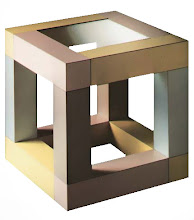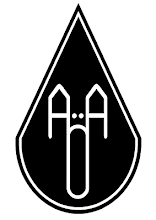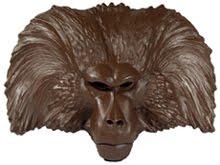The Seventies are a big mystery to me...I just dont get this decade, but sometimes it intends to tell me something.
Opening of the TV series Follyfoot and the may pole song from The Wicker Man (Click! to see it on YouTube).
Toys of the wishbook







http://www.wishbookweb.com (Click!) + DEVO action figure + beer gnome + Masters of the Universe - Eternia castle
+ She-Ra-Princess of Power castle + Max Headroom mask








Lets all walk over and say hi

Girolamo di Romano, Portrait of a Man (1516-19), Budapest, Museum of Fine Arts.
Romano was an Italian painter (Brescia 1484/87 – 1566).
Labels:
Fashion History,
Painting,
Portrait
Downtown furniture
Two designers I discovered on Dezeen.com (Click!). I kind of want all of their objects and I will try to include them into works of mine.
Joost van Bleiswijk (Click!):
Chess game, wall cabinet, candle holder and pendulum.

Roderick Vos (Click!):


The dutch designer designer Roderick Vos created this shelving unit "designed to reference Art Deco skyscrapers". It's called Downtown. "The furniture is made of square metal tubes with wooden horizontal platforms and matt black vertical planes." (Dezeen)
Thanks Henry Hinterland!
Additional here are two images of furniture designer Paul Frankl (1886–1962), Wikipedia(Click!):

...and a drawing by Los Carpinteros (a group of young Cuban artists, specialized in creating installations and objects):

Joost van Bleiswijk (Click!):
Chess game, wall cabinet, candle holder and pendulum.

Roderick Vos (Click!):


The dutch designer designer Roderick Vos created this shelving unit "designed to reference Art Deco skyscrapers". It's called Downtown. "The furniture is made of square metal tubes with wooden horizontal platforms and matt black vertical planes." (Dezeen)
Thanks Henry Hinterland!
Additional here are two images of furniture designer Paul Frankl (1886–1962), Wikipedia(Click!):

...and a drawing by Los Carpinteros (a group of young Cuban artists, specialized in creating installations and objects):

Modernism Rustique
Bruce Goff, architect, was born in born in 1904 in Alton, Kansas.
"Goff's accumulated design portfolio of 500 projects (about one
quarter of
them built) demonstrates a restless, sped-up evolution through conventional styles and forms at a young age, through the Prairie style of his heroes and correspondents Frank Lloyd Wright and Louis Sullivan, then into original design. Finding inspir- ation in sources as varied as
Antoni Gaudi, Balinese music, Claude Debussy, Japanese ukiyo-e prints, and seashells, Goff's mature work had no precedent and he has few
heirs other than his former assistant, New Mexico architect Bart Prince and Herb M. Greene. His contemporaries primarily followed tight functionalistic floorplans with flat roofs and no ornament. Goff's idiosyncratic floorplans, attention to spatial effect, and use of recycled
and/or unconventional materials such as gilded zebrawood, cellophane strips, cake pans, glass cullet, Quonset Hut ribs, ashtrays, and white turkey feathers, challenge conventional dis- tinctions between order and disorder." Wikipedia says



Images via: brucegoffbartlesville.blogspot.com



Images via: namingthewinds.comImage, katz_42' account on Flickr and Omnicircus.com
Additional, here are some images of contemporary painter David Thorpe, who I adore:



them built) demonstrates a restless, sped-up evolution through conventional styles and forms at a young age, through the Prairie style of his heroes and correspondents Frank Lloyd Wright and Louis Sullivan, then into original design. Finding inspir- ation in sources as varied as
Antoni Gaudi, Balinese music, Claude Debussy, Japanese ukiyo-e prints, and seashells, Goff's mature work had no precedent and he has few
heirs other than his former assistant, New Mexico architect Bart Prince and Herb M. Greene. His contemporaries primarily followed tight functionalistic floorplans with flat roofs and no ornament. Goff's idiosyncratic floorplans, attention to spatial effect, and use of recycled
and/or unconventional materials such as gilded zebrawood, cellophane strips, cake pans, glass cullet, Quonset Hut ribs, ashtrays, and white turkey feathers, challenge conventional dis- tinctions between order and disorder." Wikipedia says



Images via: brucegoffbartlesville.blogspot.com



Images via: namingthewinds.comImage, katz_42' account on Flickr and Omnicircus.com
Additional, here are some images of contemporary painter David Thorpe, who I adore:



Labels:
Architecture,
Painting
Zimmerbild


Zimmerbild = Image of a room
Both paintings are Berlin related. The first, from 1825 is by Leopold Zielcke (1791–1861).
The second painting, from 1849 is by Johann Philipp Eduard Gärtner (1801-1877), well-known for his detailed renderings of urban architecture.
Both are images from the catalogue "Biedermeier. Die Erfindung der Einfachheit" - "Early Victorian period. The Invention of Simplicity". In German the Early Victorian period would be Biedermeier. The word "Biedermeier" is mostly stylistically used and means the period from 1815 on to the middle of the 19th century. It implies a significant simplicity in the design of furniture, fashion and architecture; though the term you would use talking about architecture is Klassizismus (See building in the last image, also by Johann P.E. Gärtner).
The genre Zimmerbild belongs to this time, only displaying private interiors. The simple design and high quality was expensive and paintings like these mostly got generated by an order of the bourgeoisie who was the owner of apartments like this.

Labels:
1800s,
Architecture,
Interior,
Painting
Happy Ziggurat


The Ziggurat project, named after the temple towers of the ancient Mesopotamian valley is a city, providing space for a population of one million people. It's a 2.3 square-kilometer pyramid, designed to employ wind turbines to generate electricity. It is also integrating other natural renewable energy resources such as solar and steam. The building will have food production areas, parks, water channels, and lakes with climate zones which become cooler at higher elevations. Cars will not be necessary in the building as people will travel via an "elevator"network that will transport vertical- and horizontal-wise. It's called a "360 degree system". The federation of planners, designers and scientist patented the system of the Ziggurat technologies.
On Timelinks.org (Click!) you are going to find further material.


Labels:
Architecture,
Popular Science,
The Future
Abonnieren
Posts (Atom)







